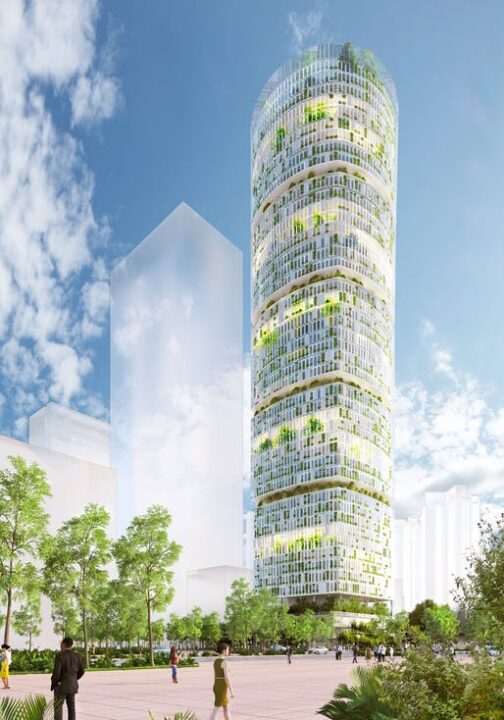
SHENZHEN: Carlo Ratti Associati (CRA) unveiled a project of the world’s first farmscraper, set to be built in Shenzhen, China. The building named Jian Mu Tower is designed to be 218 meter high, with 51-storeys, and will contain a large-scale farm system with the ability to produce crops. The farmscraper will be able to produce enough crops to feed 40,000 people per year, as well as offices, a supermarket, and a food court. The tower seeks to establish a self-sustained food supply chain where the cultivation, harvest, sale, and consumption of food takes place under one roof only.
The design, prepared by the CRA, had attained a winning entry to an international competition organised by the Chinese supermarket chain Wumart. The name of the tower has been derived from the ancient Chinese folklore, where a ‘Jian Mu tree’ connects heaven and earth. Moreover, the tradition depicts heaven as round and earth as square, and these aspects have been included in the design of the building where a rectangular base will gradually morph into a tubular form as it rises.
For the development of the tower’s system, CRA worked with ZERO, the Italian agriculture innovators. The final design created will allow for the production of salad greens, fruits, and herbs. Additionally, an artificial intelligence supported ‘virtual agronomist’ will oversee the farm’s day-to-day operations which would include managing irrigation and nutritional conditions of the soil. Carlo Ratti, founding partner of CRA and professor at the Massachusetts Institute of Technology, said that small-scale urban farming is picking pace in cities all over the world. Jian Mu Tower, however, aims at taking the innovation to the next level. On the tower’s exterior, a series of landscaped terraces containing a variety of flora including water lily, fern, and lychee, will be constructed to promote biodiversity. Internally, the building will have a series of inner gardens in double height volumes, majorly to promote social interaction and well-being among office users. The prominence of greenery in the design of the building’s surface will reduce solar gain internally, thereby reducing the need for air conditioning.

